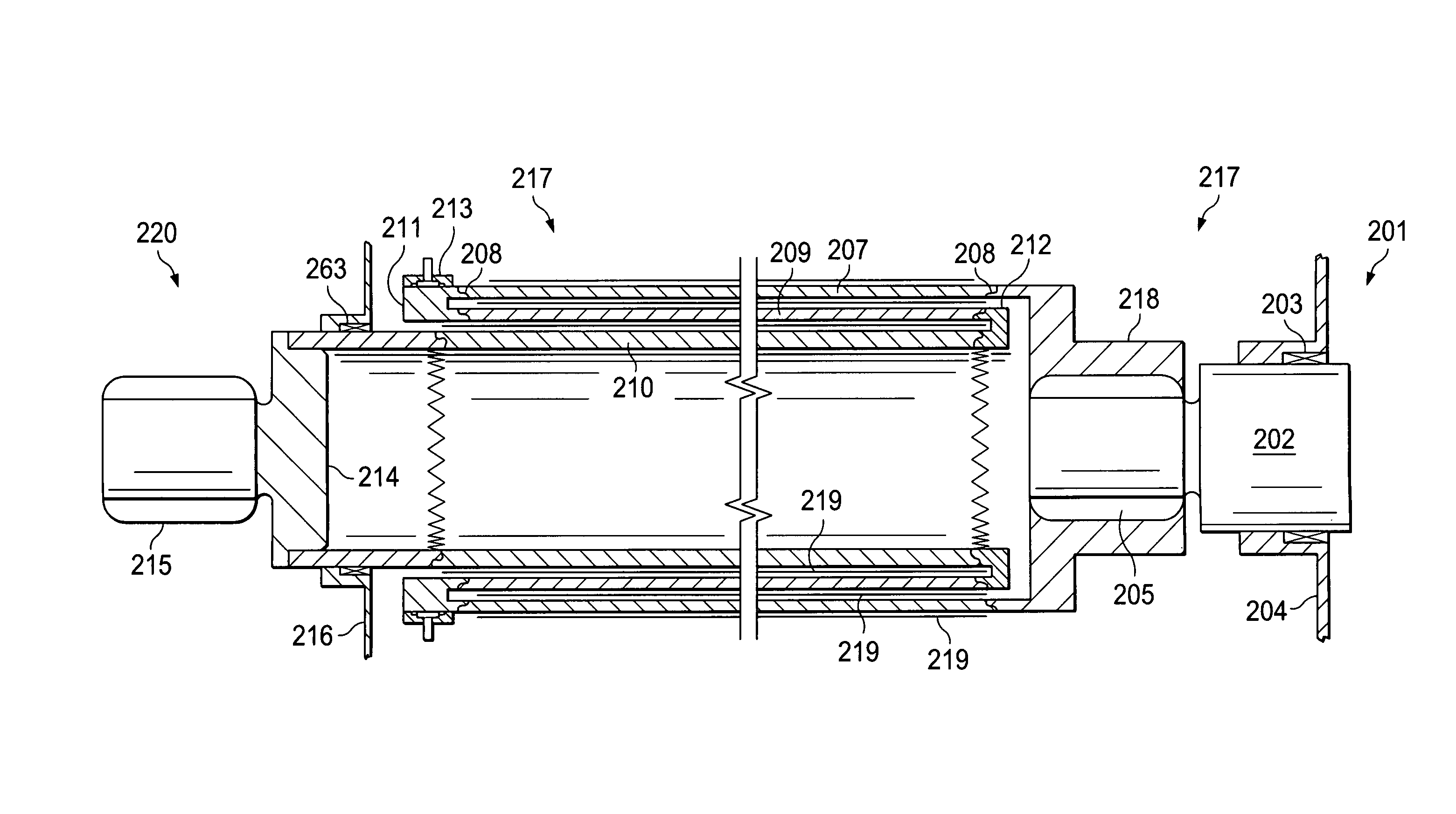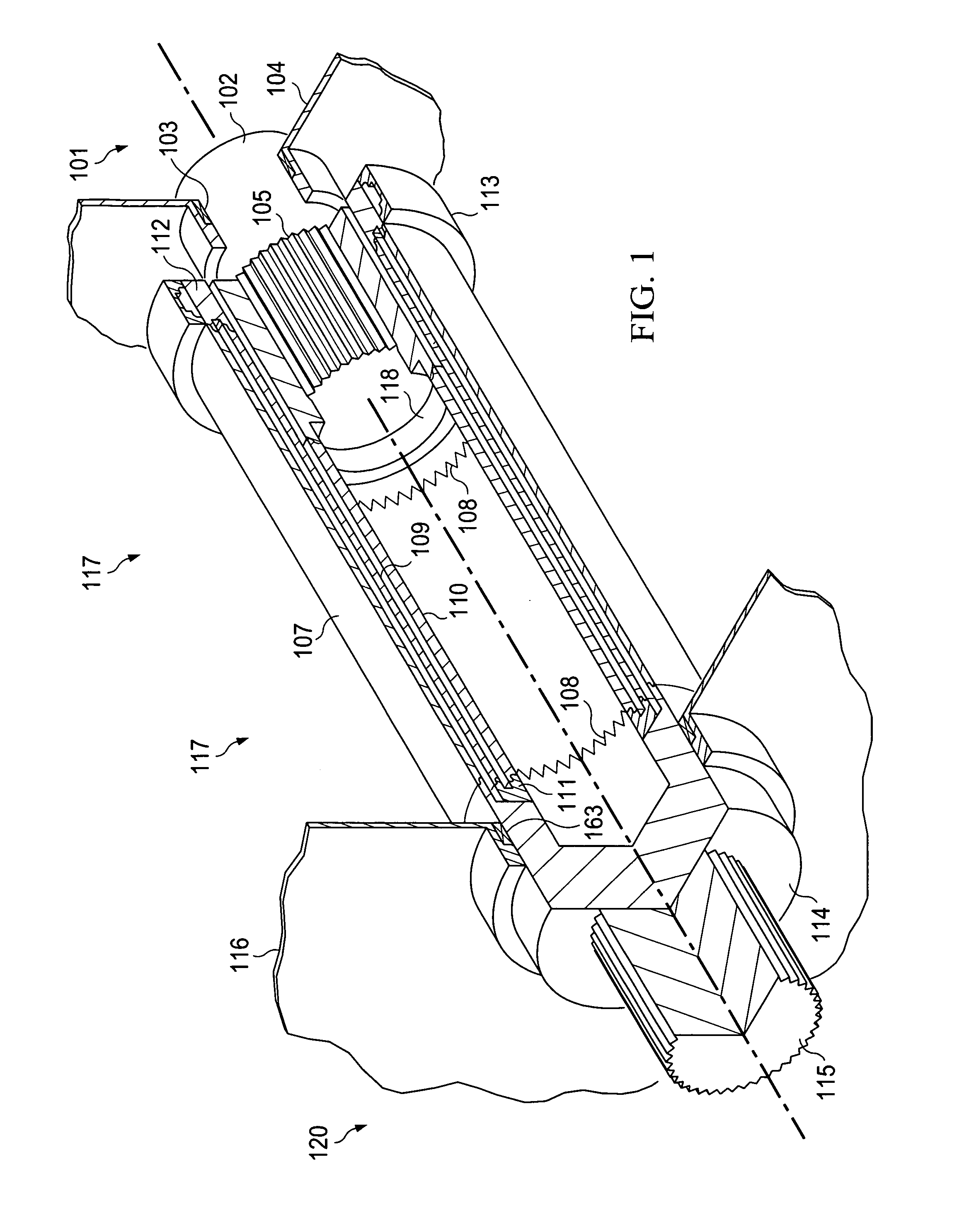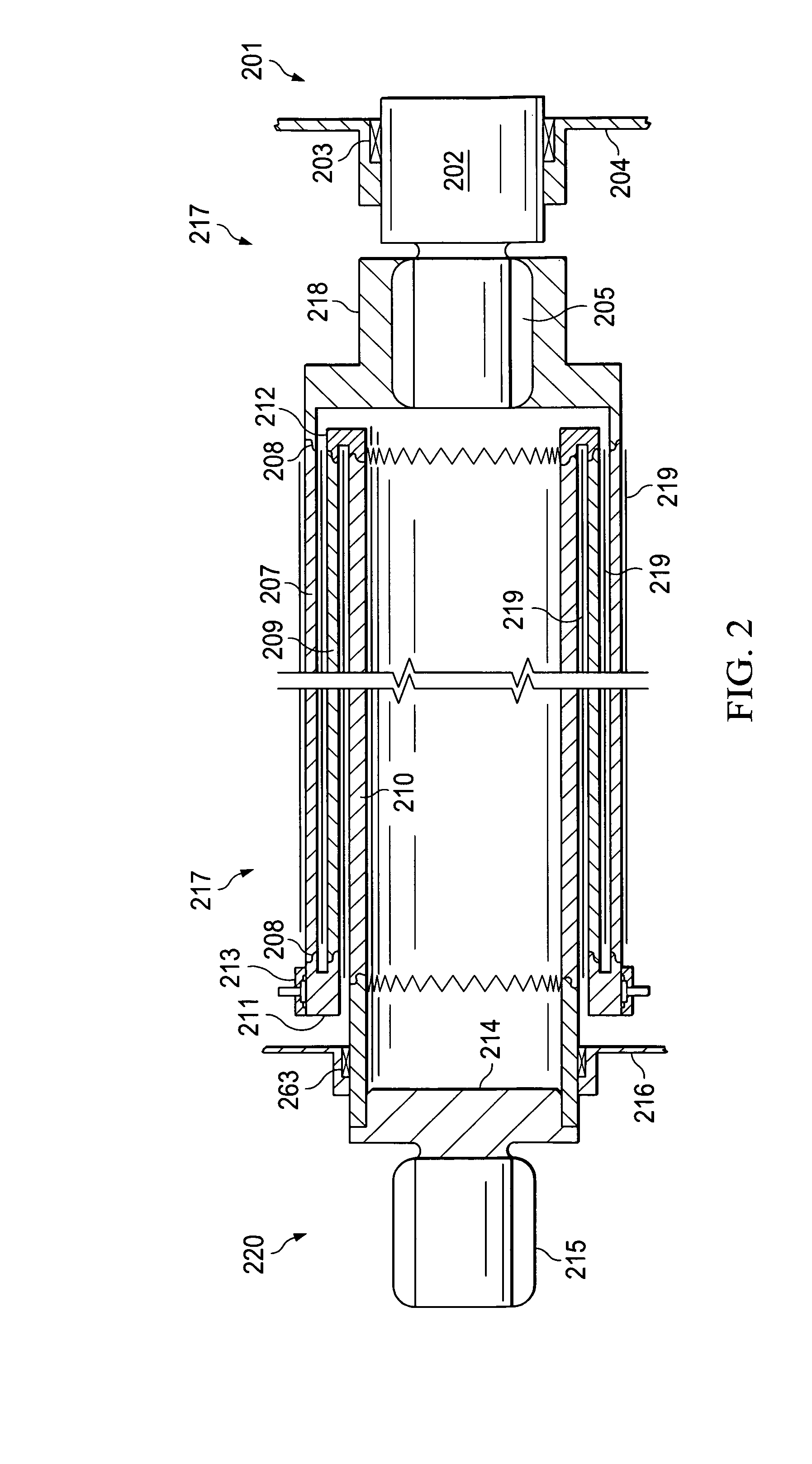Low heat leak, high torque power shaft for cryogenic machines
a cryogenic machine and high-torque technology, applied in the direction of electrical equipment, mechanical energy handling, dynamo-electric machines, etc., can solve the problems of reducing the dynamic stability affecting the operation of the rotating system, so as to reduce the heat leakage from the environment, reduce the heat transmission, and the effect of low thermal conductivity
- Summary
- Abstract
- Description
- Claims
- Application Information
AI Technical Summary
Benefits of technology
Problems solved by technology
Method used
Image
Examples
first embodiment
[0022]FIG. 1 is a low heat leak, high torque capacity shaft extension. The embodiment of FIG. 1 uses 3 concentric cylinders, with the coldest cylinder layer of the shaft extension being the inner-most layer 110.
[0023]The rotor shaft 102 of the superconducting machine extends out of the cryogenic environment 101 through the enclosure 104 into the insulating vacuum space 117 where the shaft extension is located. A bearing and seal assembly 103 is required to prevent leakage of the cryogen into the insulating vacuum space 117 and provide a load carrying bearing to support the shaft 102 and allow it to rotate freely. In order to transmit the large amount of torque required for operation, the end of the rotor shaft 102 of the superconducting machine may be configured as a splined connection 105 that engages the adapter hub 118 of the shaft extension.
[0024]The inner most (coldest) cylinder 110 is connected to this adapter hub 118. The series connection between the inner most (coldest) cyl...
second embodiment
[0027]FIG. 2 is the present invention. It uses 3 concentric cylinders, with the coldest cylinder layer of the shaft extension as the outer layer 207.
[0028]The rotor shaft 202 of the superconducting machine extends out of the cryogenic environment 201 through the enclosure 204 into the insulating vacuum space 217. A bearing and seal assembly 203 is required to prevent leakage of the cryogen into the insulating vacuum space 217 and provide a load carrying bearing to support the shaft 202 and allow it to rotate freely. In order to transmit the large amount of torque required for operation, the shaft end of the superconducting machine may be configured as a splined connection 205 that engages with splines of the adapter hub 218 on the shaft extension.
[0029]The coldest (outer) layer 207 of concentric cylinders is connected to the adapter hub 218 and makes a series connection to the middle layer cylinder 209 at the connector ring 211. A connector ring 212 makes the series connection betwe...
PUM
 Login to View More
Login to View More Abstract
Description
Claims
Application Information
 Login to View More
Login to View More - R&D
- Intellectual Property
- Life Sciences
- Materials
- Tech Scout
- Unparalleled Data Quality
- Higher Quality Content
- 60% Fewer Hallucinations
Browse by: Latest US Patents, China's latest patents, Technical Efficacy Thesaurus, Application Domain, Technology Topic, Popular Technical Reports.
© 2025 PatSnap. All rights reserved.Legal|Privacy policy|Modern Slavery Act Transparency Statement|Sitemap|About US| Contact US: help@patsnap.com



